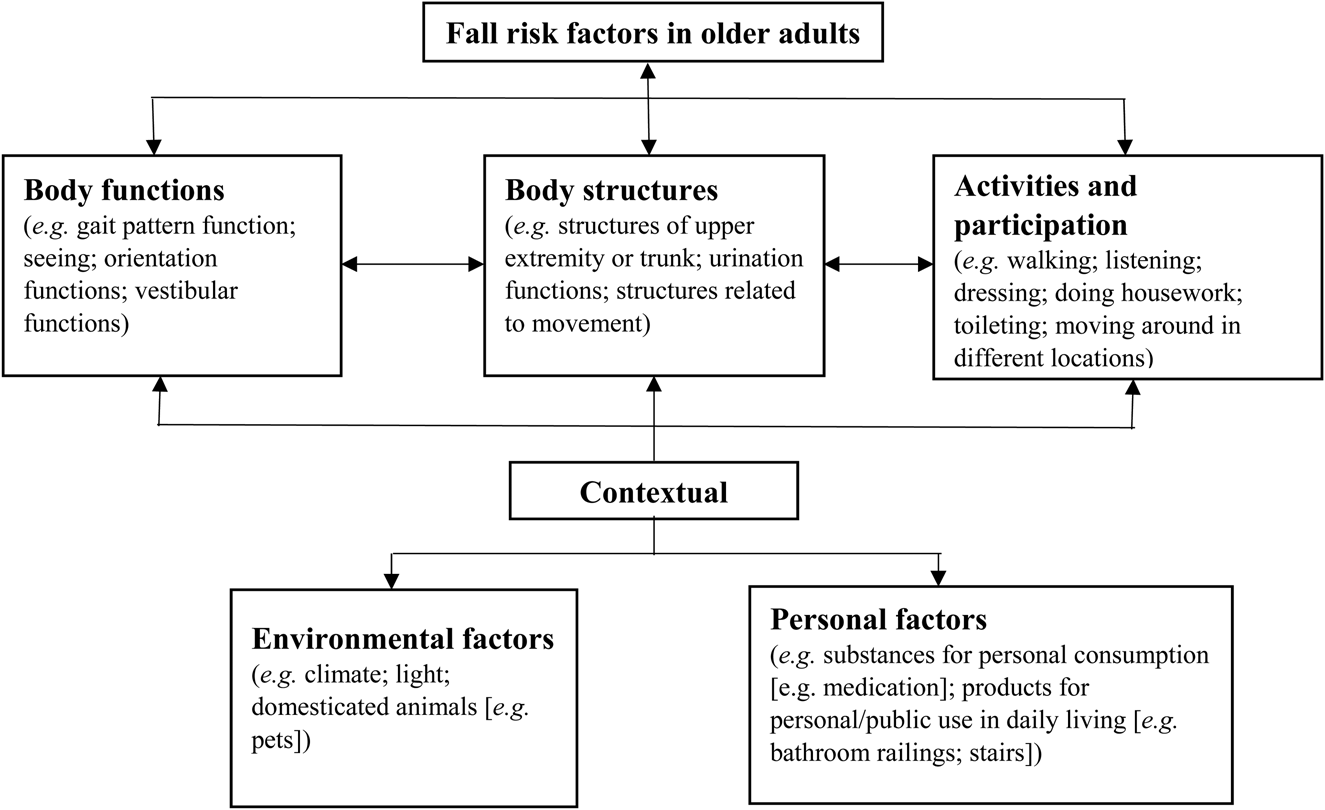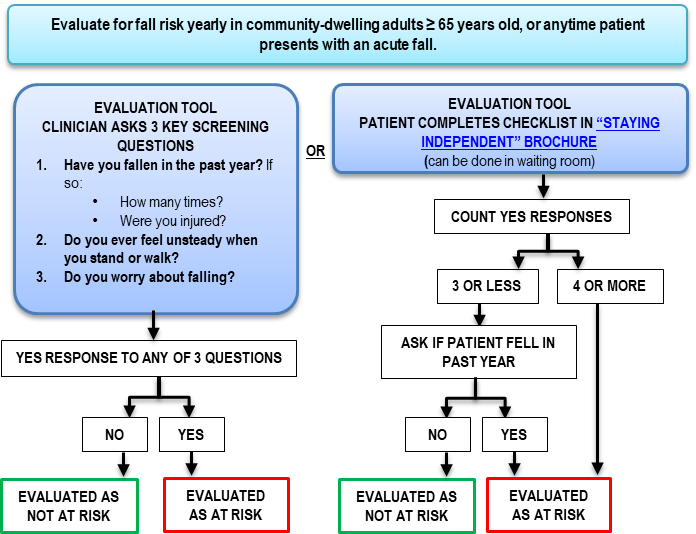The Facts About Dementia Fall Risk Revealed
The Facts About Dementia Fall Risk Revealed
Blog Article
Dementia Fall Risk for Dummies
Table of ContentsThe Single Strategy To Use For Dementia Fall RiskThe Ultimate Guide To Dementia Fall RiskThe Main Principles Of Dementia Fall Risk Unknown Facts About Dementia Fall Risk
A fall threat analysis checks to see how most likely it is that you will certainly drop. It is mainly provided for older adults. The analysis normally includes: This includes a collection of concerns concerning your overall health and if you have actually had previous drops or issues with equilibrium, standing, and/or strolling. These devices check your strength, equilibrium, and gait (the method you stroll).STEADI includes screening, analyzing, and intervention. Interventions are referrals that may decrease your danger of dropping. STEADI includes three steps: you for your danger of succumbing to your risk aspects that can be boosted to attempt to avoid drops (for instance, equilibrium troubles, impaired vision) to reduce your danger of falling by making use of reliable techniques (as an example, supplying education and learning and sources), you may be asked several questions including: Have you fallen in the past year? Do you feel unstable when standing or strolling? Are you fretted about falling?, your company will test your stamina, balance, and gait, using the following fall assessment devices: This examination checks your stride.
After that you'll rest down again. Your company will inspect the length of time it takes you to do this. If it takes you 12 secs or more, it may mean you go to higher threat for an autumn. This test checks stamina and balance. You'll rest in a chair with your arms went across over your breast.
The settings will certainly get tougher as you go. Stand with your feet side-by-side. Relocate one foot halfway ahead, so the instep is touching the huge toe of your other foot. Relocate one foot completely before the other, so the toes are touching the heel of your various other foot.
Our Dementia Fall Risk Diaries
A lot of falls take place as a result of several adding factors; therefore, taking care of the risk of dropping starts with recognizing the variables that add to drop threat - Dementia Fall Risk. Some of one of the most relevant danger elements include: Background of prior fallsChronic medical conditionsAcute illnessImpaired stride and equilibrium, reduced extremity weaknessCognitive impairmentChanges in visionCertain risky medications and polypharmacyEnvironmental factors can likewise increase the risk for falls, consisting of: Inadequate lightingUneven or harmed flooringWet or unsafe floorsMissing or damaged handrails and get barsDamaged or poorly fitted devices, such as beds, mobility devices, or walkersImproper use assistive devicesInadequate guidance of the people staying in the NF, including those that display hostile behaviorsA successful fall danger monitoring program calls for a comprehensive professional evaluation, with input from all members of the interdisciplinary team

The treatment strategy ought to likewise consist of treatments that are system-based, such as those that promote a secure environment (ideal lights, handrails, order bars, etc). The effectiveness of the interventions ought to be reviewed regularly, and the treatment strategy revised as essential to show modifications in the autumn threat analysis. Executing a fall danger administration system making use of evidence-based best method can reduce the occurrence of drops in the NF, while limiting the capacity for fall-related injuries.
Dementia Fall Risk Fundamentals Explained
The AGS/BGS guideline suggests evaluating all adults matured 65 years and older for fall danger each year. This testing consists of asking clients whether they have fallen 2 or even more times in the previous year or sought clinical interest for a loss, or, if they have actually not fallen, whether they really feel unstable when walking.
People that have fallen when Visit Your URL without injury needs to have their equilibrium and gait assessed; those with stride or equilibrium irregularities must receive added analysis. A history of 1 autumn without injury and without gait or equilibrium problems does not warrant further assessment beyond continued yearly loss danger testing. Dementia Fall Risk. A fall danger analysis is required as component of the Welcome to Medicare evaluation

Some Known Factual Statements About Dementia Fall Risk
Documenting a drops history is one of the top quality indicators for fall prevention useful site and administration. A crucial component of danger assessment is a medication evaluation. Numerous classes of medications enhance autumn threat (Table 2). Psychoactive drugs particularly are independent predictors of falls. These medicines often tend to be sedating, alter the sensorium, and impair equilibrium and stride.
Postural hypotension can usually be minimized by decreasing the resource dose of blood pressurelowering medications and/or quiting medicines that have orthostatic hypotension as a negative effects. Use above-the-knee support pipe and copulating the head of the bed boosted might also minimize postural decreases in high blood pressure. The advisable components of a fall-focused checkup are displayed in Box 1.

A Pull time better than or equal to 12 seconds suggests high autumn risk. Being not able to stand up from a chair of knee height without making use of one's arms shows raised loss risk.
Report this page